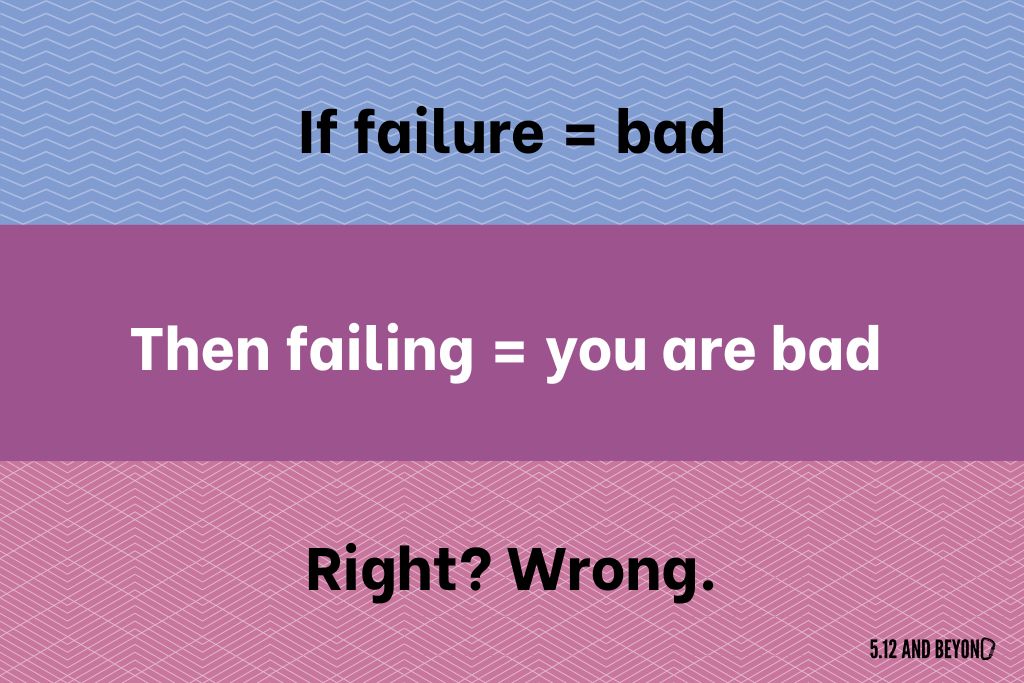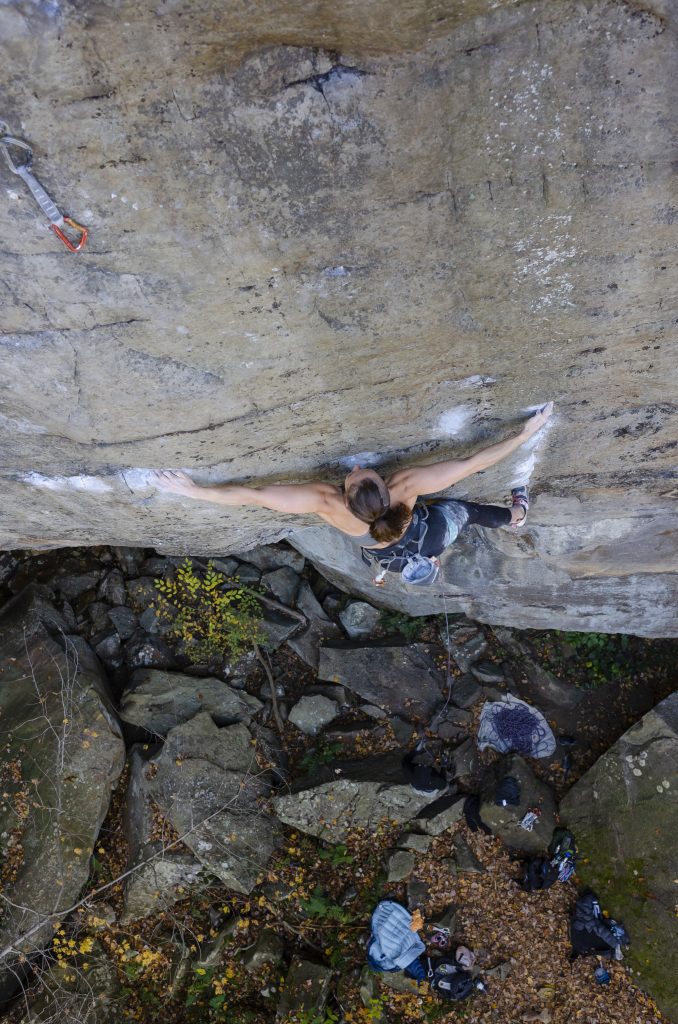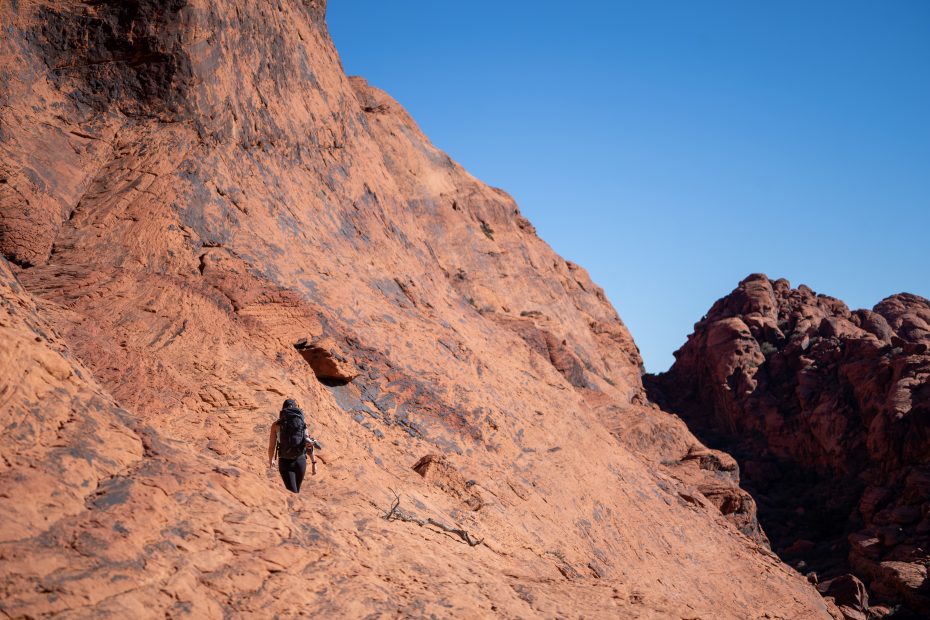Climbing is mostly failing. You know that. I’m sure you’ve heard pro climbers talk about how you have to be okay with failing – it’s what you’ll be spending most of your time doing, after all.
What I’ve noticed in dealing with failure myself is that acceptance isn’t really the answer. In my opinion, you need to be more than okay with failing: you have to embrace it. I think that keeping failure at arms-length (yes, that’s a pun) can hold you back and hinder your climbing experience.
You ever see people at the crag – or the gym – look defeated? You know, the people who look really sad, or the people who throw a wobbly when they fall, or any number of other things. Failing is making them upset. And sometimes, that’s fair enough. But if you start looking, you’ll see this happen a lot – and you’ll see it suck the joy right out of people.
It makes total sense why you might not embrace failure: it is a negative thing by definition. Failure is a lack of success, a goal left unachieved, a route not sent. If a large proportion of climbing is failing (let’s say 95%), then that would mean 95% of climbing is negative… which is definitely not true.

If you can embrace failure, you can turn those negative experiences into positive ones – and learn from them. This has two very large benefits: 1) more learning and 2) a nicer time climbing. It’s not fun for anybody to feel shit about themselves all the time, and it saps the fun out of climbing. I know, because I used to feel that way.
Here’s what I did
When I failed, I would just think about how much I sucked. That’s kind of the easiest thing to say to yourself in the moment. “I can’t do x thing because I’m bad at climbing. The end.” But when you fail, there’s always something to be learned. Instead of jumping straight to “I suck”, trying to figure out what you learned in your efforts is super helpful. Like, ridiculously helpful.
Easier said than done, I know – so this is what I did to shift my mindset. I made myself identify three things that I did well in each session, which was extremely uncomfortable at first. “Um, I did nothing well, I’m bad at climbing,” said my brain. But then, from each “failed” session, I began to learn what I was good at. Failing went from something that made me feel miserable to something that called for introspection, and it didn’t feel so bad anymore.
Once that became more normal, I started to try and identify what I learned. This can be micro or macro: you could learn that you need to shake out your right hand more than your left at the rest before the crux, or you could learn that you perform better when you climb in the afternoon. The sky is the limit. You can gain a lot of information from your failures, and information is power. That’s how you get better at climbing.

Embracing failure makes climbing way more fun
When you punt off the last hard move of your climb for the third time in a row, it’s SO much more fun to come down thinking “I need to make sure I get my thumb in the right spot on that pinch” than “I’m the worst climber in the world”.
Sometimes, what you learn from failing is even better than sending. Yes, really. One memorable example of this for me is taking a giant, scary, runout whip at the crux of a climb. I came down and said to my belayer “I’m happier about taking that fall than I would be about sending”. I did later send the route – and post-send, it’s still the fall that makes me feel the best.
Yesterday, I picked a cool-looking route to try and onsight. Before I try and onsight anything, I tell myself that I will be happy if I give it my best effort – as in, I define success in an onsight as giving it my all. Like, screaming and taking whips. I didn’t send: I fell one move away from the end because I misread the sequence. But I tried hard, and I was stoked with my go. I learned that my ability to try hard on demand for onsight attempts is pretty good – but that I need to practice reading sequences more. I felt only good things about this climb. And that’s pretty cool.
The moral of the story
Sending is not everything – it’s not even close. If you’re trying to be a better climber, sending is not how you get there. It’s just another metric of progress. You are getting better, day by day, even if you’re not crushing harder grades all the time. So be stoked with what you are learning, rather than what you’re not sending. And when you do send, that’s the cherry on top.
Featured image credit: Ryman Wiemann
